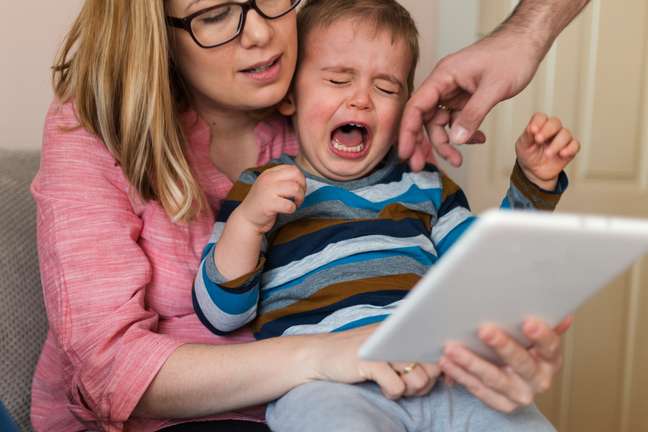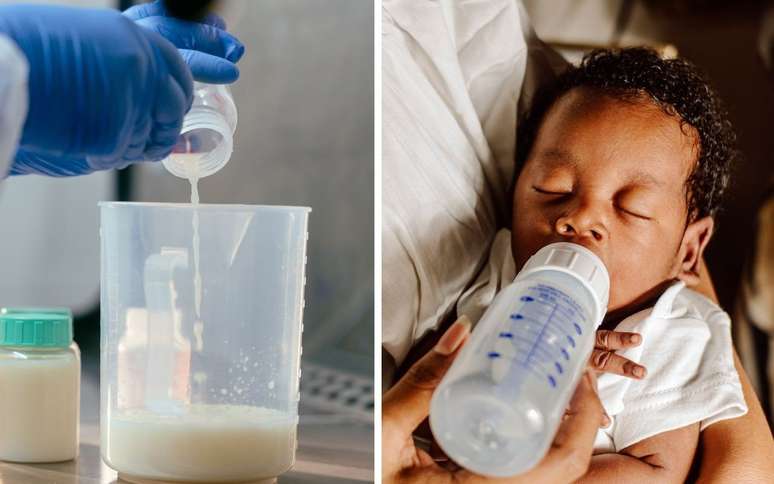According to one study, the immediate effect may seem positive, but the long-term consequences interfere with how you deal with feelings
When your child cries or throws a tantrum, it’s natural for nearby adults to look for a way to calm him down, especially when he’s still young and needs help managing his emotions. In this search for a distraction, sometimes screens emerge as family allies and indeed they may have the intended effect. The problem is that, besides that, other consequences follow, such as greater emotional dysregulation – this is what emerges from a study developed by researchers at Michigan Medicine, in the United States, and published in the JAMA Pediatrics.

The work observed 422 parents and as many children aged 3 to 5 between August 2018 and January 2020 (i.e. before the Covid-19 pandemic, which further accentuated the use of screens). The researchers collected information on the frequency with which electronic devices were used to calm the little ones and analyzed symptoms of emotional reactivity or dysregulation.
The results highlighted this the sudden change in mood ends up not giving the child the opportunity to develop ways of managing strong emotionsbeing more harmful in boys and, above all, in those who already have hyperactivity or are characterized by a “strong personality”.
“Frequent use of mobile devices to calm young children may damage their opportunities to learn emotion regulation strategies over time”, says the conclusion of the study. With this in mind, the researchers encourage research into other approaches that help toddlers achieve calmness on their own, so that they develop this skill bit by bit.

Help the child deal with emotions
The publication underlines this early childhood is a critical period for the development of emotional and cognitive processessuch as emotional regulation, which are even more important for academic success than ‘crystalised intelligence’, for example, as they allow children to remain calm, focused and flexible in the face of new challenges.
“Especially in early childhood, the frequent use of nervousness-reducing devices may rob you of the opportunity to develop independent, alternative self-regulatory strategies,” the article states.
Study leader Jenny Radesky, a pediatrician and behavioral development specialist at CS Mott Children’s Hospital at the University of Michigan Health, said in an article posted on the institution’s website that, while the initial result may seem positive, in the long run it will not be. “Caregivers may experience immediate relief from device use if they quickly and effectively reduce children’s negative and challenging behaviors. This is rewarding for both parents and children and may motivate this cycle to continue , as the habit of using these tools to handle difficult situations become stronger over time, as children’s demand for this strategy also increases. Thus, the more devices used, the less practice children—and their parents—have in finding other coping strategies“, he states.
The specialist also indicates some alternative ways of dealing with the difficult behaviors of the little ones, such as, for example sensory techniques (hugging someone, kneading something, handling clay…), the act of naming emotions (teaching them to say what and how they feel) ea focus shift (saying, for example, “You can’t hit anyone, but you can hit this pillow”). In addition to these possibilities, every family can find what works best for every child. The main idea is to give her the tools to learn how to deal with her feelings and not just calm her down quickly without processing her emotions.
+The best content in your email for free. Choose your favorite Terra newsletter. Click here!
Source: Terra
Ben Stock is a lifestyle journalist and author at Gossipify. He writes about topics such as health, wellness, travel, food and home decor. He provides practical advice and inspiration to improve well-being, keeps readers up to date with latest lifestyle news and trends, known for his engaging writing style, in-depth analysis and unique perspectives.







